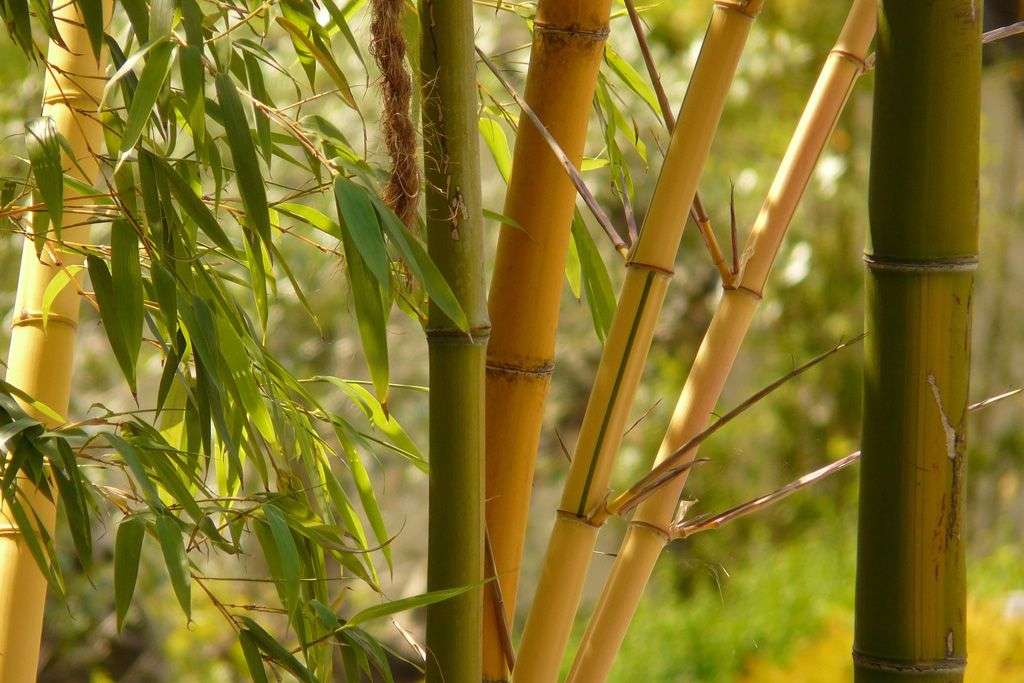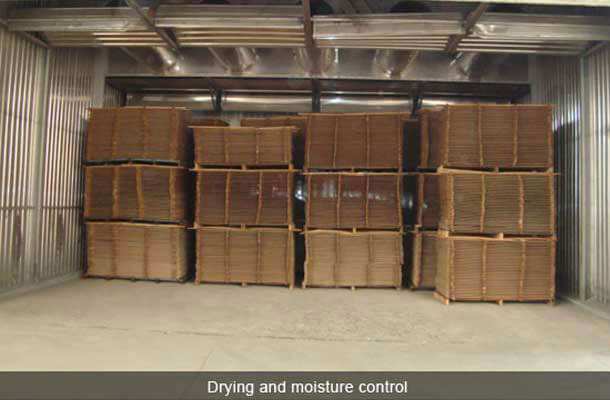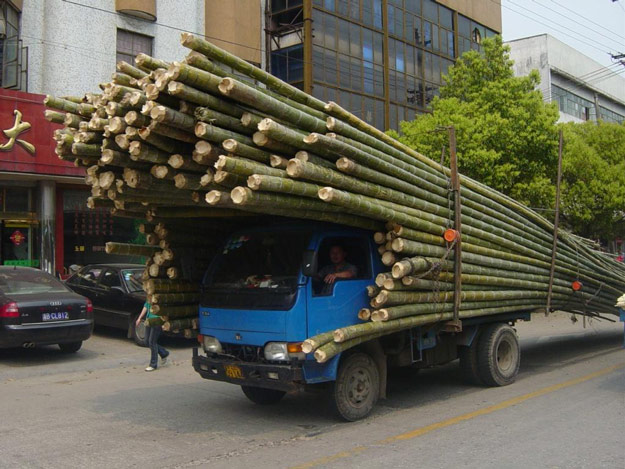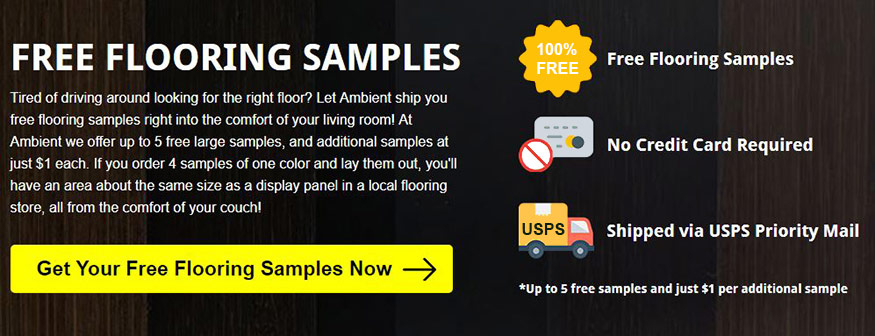We love when people try to recycle or reuse plants, materials, textiles, anything.
At Ambient we’re often asked: Can I sell or donate the bamboo growing in my backyard? While we support recycling and re-use, unfortunately, the answer is no.
There are many different reasons for this – the key one being that the Moso bamboo species we use in our flooring is a different species than what exists in the U.S., and the culms we source meet particular requirements. Take a look here if you want to know why Moso bamboo is the best for flooring. Furthermore, there are no bamboo floor manufacturing facilities (where the flooring is put together from raw material to milled plank) anywhere in the Americas (to date).
The great majority of the world’s supply of bamboo flooring is manufactured in China and then shipped to the sale country. Thus we would have to ship your backyard bamboo to China to be turned into flooring and then back to the U.S. again. As you would agree, this would be neither eco-friendly nor cost-effective!
While you might not have any luck selling your bamboo to any large volume bamboo product providers like Ambient, you may have success if you approach smaller crafts manufacturers or artisans. Since bamboo grows so fast, there’s no doubt you’ll have to wait a little time to replenish your new customers!
Our bamboo floor making process
Our bamboo flooring manufacturing process is rigorous, and we only use Moso Bamboo culms that are at least 5-7 years of age. The culms we use are around 7-10 inches in diameter and upwards of 50 feet tall, and this towering species is not commonly found in U.S. gardens. This is so that we can ensure the high-quality product that our customers expect.
Our Moso bamboo comes from well-managed farms, and we select only the best culms for manufacturing. Weaker culms are recycled and used to make other goods – nothing is wasted!
To ensure our floors don’t shrink or swell after being installed, a consistent moisture level is required. Our wood floors are tested meticulously for the correct balance of moisture. We wouldn’t be able to accurately measure this if we used bamboo from all over the world, as each species would contain different levels, and we wouldn’t get consistent results.
Another reason for sticking with our wonderful Moso bamboo is for consistency in color. Nobody wants a mismatched floor, which is why only one species of bamboo can be used. We group finished flooring planks into groups of similar colors as the manufacturing process can color even the same bamboo type slightly differently.
Ambient provides products with just enough diversity to add a natural variation to your floors without being jarring. This wouldn’t be possible with multiple bamboo species as they would all look so different after being processed.
Is homegrown bamboo worth money?
Unfortunately, no. So, what to do with your homegrown bamboo?
Hey, just because we can’t take your bamboo doesn’t mean it has to be stuck in your garden forever! Bamboo is a highly versatile natural building material that lends itself perfectly to many different types of craft. Here are a few ideas to recycle your homegrown bamboo into something extraordinary that you and your family can enjoy for years to come. If you can’t sell bamboo, you might as well do something fun with it.
10 bamboo craft ideas for homegrown bamboo
- Create trellises or other garden structures. This article shows some step-by-step instructions on how to make a garden trellis from bamboo.
- Make a rustic style picture frame – here’s how.
- Craft simple and unique hanging planters as shown in this article.
- Entertain your guests in style with a beautiful bamboo drinks trolley like this one.
- Use different sizes and shapes to create decorative features for your home.
- Add some sparkle to your garden with these bamboo wind chimes.
- Substitute twigs for bamboo in this children’s handmade boat craft and spend the day racing boats with your kids.
- Encourage wildlife to visit your garden with this bamboo bumblebee hotel.
- Who says bamboo is just for floors? Check out this bamboo wall for some epic home décor inspiration.
- If you’re feeling super ambitious, you could even try and make a bamboo bike!
- Give it a try to using it for cooking some bamboo-inspired dishes!
If any of the above ideas do not enthrall you, then don’t despair! If you want some bamboo products in your life made from your very own homegrown plants, then search for local craftsmen (or women!) in your area who might be able to make something for you.
How to harvest homegrown bamboo
If you’re going to get crafty with your bamboo, be sure to take appropriate safety measures when cutting it down and preparing it for use.
Here are some tips for harvesting your homegrown bamboo:
But… what about the pandas?
We frequently hear potential customers’ concerns about our products potentially impacting the giant panda population since the majority of their diet comes from bamboo. Please don’t worry – our flooring does not impact the panda population.
We use a specific type of bamboo that isn’t eaten by pandas. If you want to get technical, our bamboo species is Phyllostachys Pubescens, also known as Phyllostachys Edulis (or Moso/Mao/Hairy bamboo). Furthermore, our bamboo comes from well-managed forests that are not inhabited by pandas. Furthermore, our products are Lacey Act compliant, which means that they are legally sourced with minimal damage to the environment.
We hope you enjoyed our collection of bamboo crafts. If you complete any of the craft projects on this page – or indeed ANY craft project using bamboo – we’d love to see the results! Please send us a photo of us for your chance to be featured on our page.
Last Updated: 1/7/2022

About the Author
Jen is your go-to guru for crafting a cozy, green cocoon. 🪴 Her dive into sustainable building wasn’t just about saving the planet—it started as a mission to make family movie nights eco-friendly (and to ensure the popcorn was the only thing getting heated!). With a knack for breaking down the jargon, Jen turns eco-lingo into everyday language. Swing by the Green Living blog for a mix of earth-loving advice and home improvement hacks. Whether you’re just dipping your toes into green waters or you’ve been swimming in the deep end of DIY projects, Jen’s here to guide, giggle, and remind you that every eco-choice is a step towards a planet that thanks you… and maybe even sends a rainbow your way! 🌈






Blessings,I use them making flutes and putting up a fence for orchids.You can eat the leaves.
That’s a great use for bamboo! Bamboo has been traditionally used for making musical instruments for many years.
I should think that wired or tied sections, much like one would use for fencing, could be well utilized in creating treehouse, playhouses and forts for kids…not to mention in growing it you could find yourself in possession of a wonderful fairytale perfect forest or private hideaway for yourself…it would take your family quite a while to find you!!!😮😃
Hi Audrey,
That’s a great idea! Kids have a great imagination and I think would totally get on board with their own bamboo jungle to explore!